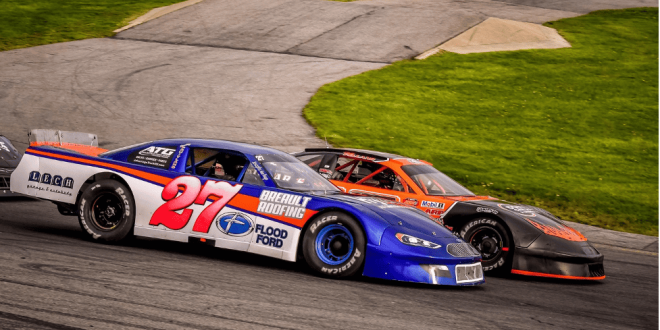Speedway racing, a heart-pounding motorsport, captivates fans with its high-speed thrills and intense competition. Unlike other forms of racing, speedway stands out for its unique format, distinctive motorcycles, and rich history. This article explores the origins, mechanics, and culture of speedway racing, providing a comprehensive guide to this exhilarating sport.
The Origins of Speedway
Early Beginnings
Speedway racing traces its roots back to the early 20th century. The sport is believed to have originated in Australia, where the first recorded race took place in 1923 at the West Maitland Showground. The popularity of these early races quickly spread, reaching the United Kingdom by the late 1920s. Britain embraced speedway, and it became a cornerstone of the motorsport scene, leading to the establishment of professional leagues and regular competitions.
International Expansion
As speedway gained traction in the UK, it also spread to other parts of Europe, including Sweden, Denmark, and Poland. These countries developed their own domestic leagues and became powerhouses in the sport. Today, speedway is a global phenomenon, with world championships and international competitions drawing top riders from around the world.
The Mechanics of Speedway Racing
The Bikes
Speedway motorcycles are distinctively different from those used in other forms of racing. These bikes are lightweight, with a simple design that emphasizes speed and agility. Key features include:
- Engine: Speedway bikes typically use 500cc single-cylinder engines, running on methanol fuel. This setup provides a high power-to-weight ratio, crucial for rapid acceleration.
- Frame: The frames are minimalistic and built for maximum durability and control.
- Brakes: Notably, speedway bikes do not have brakes. Riders rely on engine braking and sliding techniques to control their speed and navigate corners.
The Tracks
Speedway races take place on oval dirt tracks, typically ranging from 260 to 425 meters in length. The dirt surface allows riders to slide their bikes around corners, a technique known as “broadsliding,” which is a hallmark of the sport.
The Races
A speedway race, or “heat,” usually consists of four laps around the track. Races are short and intense, lasting around a minute. Riders compete in heats, accumulating points based on their finishing positions. The format emphasizes quick reflexes, tactical riding, and split-second decision-making.
The Culture of Speedway
Fan Engagement
Speedway has a passionate fan base that contributes to the sport’s vibrant atmosphere. Fans are drawn to the fast-paced action, close competitions, and the skillful riding on display. Many supporters follow their favorite teams and riders, attending races regularly and participating in fan clubs and online communities.
Major Competitions
Several major competitions highlight the speedway calendar:
- Speedway Grand Prix: This series determines the individual world champion. Riders compete in a series of events across different countries, with points accumulated throughout the season.
- Speedway World Cup: This team event features national teams competing for the title of world champions. It showcases the sport’s international appeal and the camaraderie among riders.
- Domestic Leagues: Countries like the UK, Poland, and Sweden have robust domestic leagues that attract top talent and feature thrilling races.
Famous Riders
Speedway has produced many legendary riders who have left an indelible mark on the sport. Names like Ivan Mauger, Tony Rickardsson, and Tai Woffinden are celebrated for their numerous championships and contributions to speedway’s popularity.
The Thrills and Challenges of Speedway
The Thrill of the Race
The allure of speedway lies in its high-speed, high-stakes nature. The combination of rapid acceleration, tight corners, and close racing creates an adrenaline-fueled spectacle. The absence of brakes adds an extra layer of skill and excitement, as riders must master sliding and maneuvering at high speeds.
The Physical and Mental Challenges
Speedway racing demands exceptional physical and mental attributes. Riders must possess quick reflexes, superior balance, and the ability to make split-second decisions. The physical toll of racing at high speeds, combined with the mental strain of intense competition, makes speedway one of the most demanding motorsports.
Safety Measures
While speedway is thrilling, it is also inherently dangerous. Safety measures are paramount, with riders wearing protective gear, including helmets, gloves, and specialized racing suits. Tracks are designed with safety barriers and medical personnel are always on hand to respond to accidents.
The Future of Speedway
Speedway continues to evolve, embracing new technologies and expanding its reach. Efforts to increase the sport’s visibility include broadcasting races on television and streaming platforms, engaging with fans through social media, and promoting grassroots participation. The sport’s governing bodies are also exploring ways to enhance safety and sustainability, ensuring that speedway remains an exciting and viable motorsport for future generations.
Conclusion
Speedway racing is a unique and exhilarating sport that captivates fans with its fast-paced action and skilled riders. From its origins in early 20th-century Australia to its status as a global motorsport, speedway has grown and evolved, maintaining its appeal through thrilling races and a passionate fan base. Whether you’re a longtime fan or new to the sport, the world of speedway offers a captivating blend of speed, skill, and excitement.
To delve deeper into this thrilling motorsport and witness the excitement firsthand, explore the world of speedway and discover why it continues to captivate audiences around the globe.
 Posting Point
Posting Point

